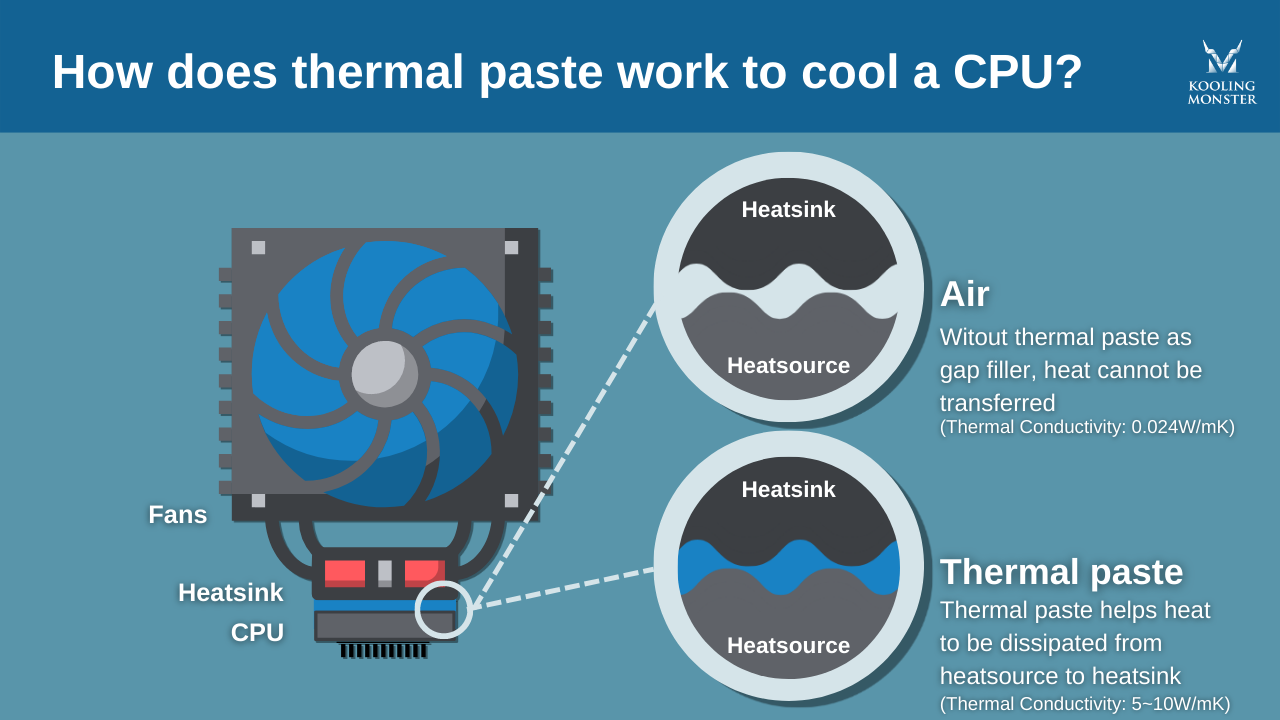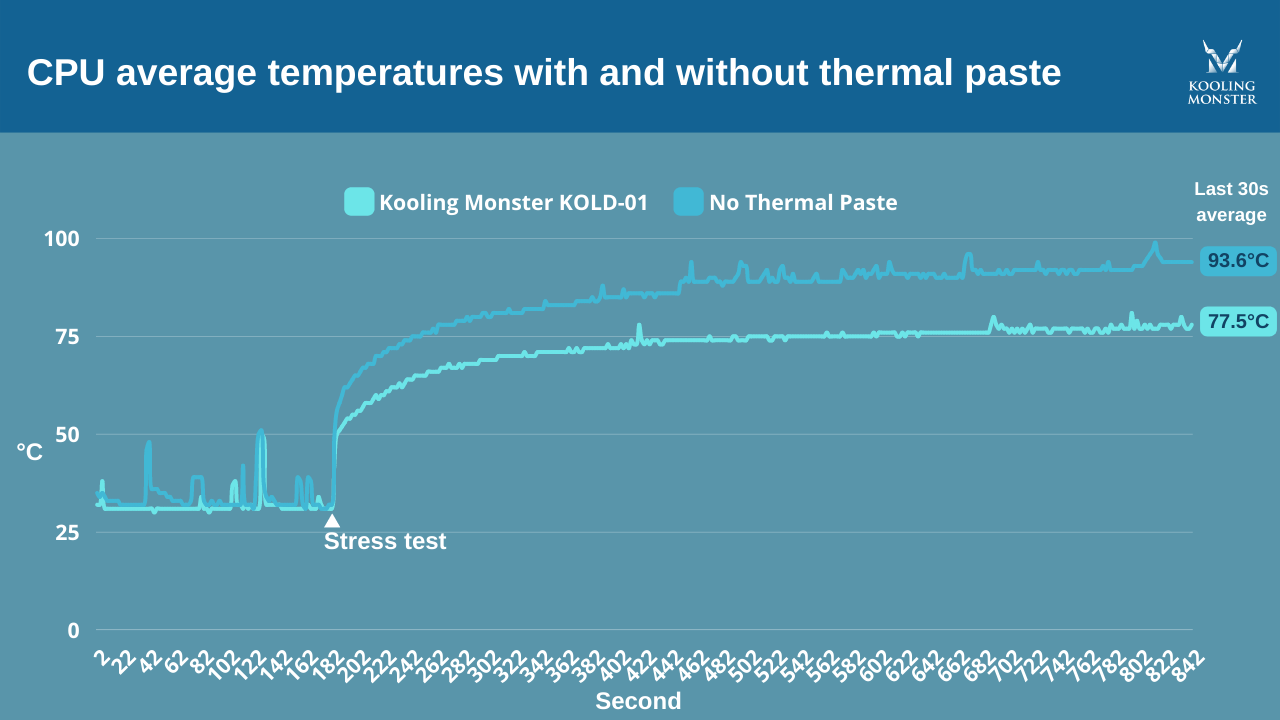Do you need thermal paste for air cooling?
The importance of thermal paste in a computer's cooling system is often underestimated, especially when it comes to air cooling. This article will discuss the necessity of thermal paste for air cooling, the consequences of not using it, and how often it should be replaced. We'll also explore some alternatives if you're unable to get your hands on proper thermal paste.
Do You Need Thermal Paste for Air Cooling?
The short answer is yes, thermal paste is essential for a fan cooler. It serves several crucial purposes that help keep your computer running smoothly:
Heat Transfer
The heat generated by processors wouldn't be able to reach the heatsink efficiently without thermal paste. This compound fills in the microscopic gaps between the CPU and the heatsink, ensuring maximum contact between the two surfaces. This is vital because even seemingly smooth surfaces have tiny imperfections that can trap air, which acts as an insulator, impeding heat transfer. Thermal paste, being a thermally conductive material, bridges these gaps, significantly improving the heat transfer from the CPU to the heatsink.
Heat Dissipation
If heat cannot reach the heatsink effectively, air fans wouldn't be able to dissipate the heat efficiently. A layer of thermal paste between the CPU and the heatsink ensures that the heat is evenly distributed across the heatsink's surface, allowing the fans to cool the heatsink more effectively. This helps maintain a lower temperature for the CPU and other components, reducing the risk of thermal throttling and extending the lifespan of your computer.
Prevent Overheating
A computer that runs too hot can experience a variety of issues, including reduced performance, system crashes, or even permanent damage to components. Overheating can also cause the CPU to throttle its speed to protect itself from damage, leading to a sluggish and unresponsive system. Properly applied thermal paste helps prevent these problems by facilitating efficient heat transfer and dissipation.
To demonstrate the importance of thermal paste, we tested a desktop computer with and without it. The test setup included an Intel Core i3-10105F CPU, Asus H510M-E motherboard, air cooling Golden Field cooler, and ADATA 8G memory. We used AIDA 64 to stress the CPU and HWinfo to monitor the CPU package temperature. The results showed a significant temperature difference of 16℃, with the CPU reaching 93.6℃ without thermal paste and 77.5℃with thermal paste applied using Kooling Monster KOLD-01 and a 5 dots application method. This temperature gap can drastically affect your PC's performance and stability, emphasizing the need for thermal paste in any air cooling system.
Can I Play Games Without Thermal Paste?
Although it is technically possible to play games without thermal paste, it is strongly advised against if you care about your gaming experience. Running a gaming system without thermal paste can lead to extremely poor performance, as the heat generated by the CPU and GPU will not be effectively dissipated. This lack of efficient heat management will result in lower frame rates (fps), causing stuttering and lag in games, ultimately ruining the gaming experience.
To demonstrate the impact of thermal paste on gaming performance, we conducted a test using a 3-year-old Acer Nitro 4 AN515-54 laptop. The laptop was equipped with an Intel Core i5 CPU, NVIDIA GeForce GTX 1660 Ti (6GB) GPU, Samsung 16GB DDR4 memory, and a CFL Octavia_CFS motherboard. We used HWinfo to monitor the average fps over a 5-minute period while playing the game Elden Ring. We focused on high-pressure moments during combat to simulate demanding gaming situations.
The results clearly showed a significant difference in performance with and without thermal paste. When the laptop was operated without thermal paste, it only managed to achieve an average of 8fps, while the laptop with thermal paste applied using Kooling Monster KOLD-01 and a 5 dots application method achieved an impressive average of 41fps. This represents a staggering 412% increase in fps when thermal paste was utilized.
These results illustrate the substantial impact that thermal paste can have on gaming performance. Skipping the application of thermal paste can lead to a severely compromised gaming experience, with low frame rates and increased risk of overheating, which can cause permanent damage to your computer's components. If you value your gaming experience and the longevity of your gaming system, it's crucial to use thermal paste to ensure optimal heat management and performance. (Learn more about Is It Okay to Use My Gaming PC Without Thermal Paste?)
How Often Should I Replace Thermal Paste?
Determining the ideal frequency for replacing thermal paste is not a one-size-fits-all answer, as it depends on several factors such as the type of PC usage, the quality of the thermal paste, and the components themselves. Lower quality thermal paste and demanding PC usage, such as heavy gaming or video editing, may require changing the paste every few months. In contrast, high-quality thermal paste and lighter PC usage, like web browsing or document editing, may only necessitate replacing the paste every few years. (Learn more about How Often Should You Replace Thermal Paste?)
Instead of relying solely on predetermined timeframes, it is more effective to monitor your CPU temperature, system performance, and the appearance of the thermal paste to gauge when it might need replacing. Signs that your thermal paste requires replacement include cracked, dry, or stiff paste, as well as oil bleeding or dripping. These conditions indicate that the paste is no longer effectively transferring heat, and replacing it would help improve your system's overall performance.
Another important aspect to monitor is the idle CPU temperature. Abnormally high idle temperatures, generally ranging between 60 to 80 degrees Celsius, can serve as an indicator that the thermal paste is no longer performing optimally and needs to be replaced. Regularly checking your CPU temperature and system performance, in addition to inspecting the thermal paste's physical condition, will help ensure that your system remains cool and operates efficiently, maximizing its lifespan and minimizing the risk of component damage due to overheating. (Learn more about How to Check CPU Temperature and Why Is It Important?)
What are other thermal paste alternatives?
While thermal paste is the most common and effective solution for optimal heat transfer between the CPU and heatsink, there may be situations where you are unable to obtain the proper thermal paste. In such cases, there are a few acceptable substitutes, but it is essential to note that these alternatives should only be used temporarily until proper thermal paste can be acquired, as their thermal conduction properties may not be as effective.
Thermal pad
Thermal pads are solid, pad-like materials that can be used as a replacement for thermal paste, albeit with inferior thermal conduction properties. These pads are typically made of silicone-based materials infused with thermally conductive fillers, such as ceramic or metal particles, to enhance their heat transfer capabilities. Thermal pads come in multiple rectangular sizes, which could make finding the right size a bit of a hassle. However, they are easy to apply, requiring no spreading or additional tools. They can be placed directly between the CPU and heatsink, providing a simple, mess-free application process.
Thermal gel
Thermal gel is a dense, grease-like fluid that can fill in all the micro air bubbles between the two components, similar to thermal paste. However, it solidifies quickly after exposure to air, making it difficult to properly apply and remove from the CPU and heatsink. This property can lead to potential issues in achieving an even and effective layer of thermal interface material, and it may not offer the same level of performance as thermal paste. Additionally, thermal gel may not be as widely available as thermal paste or pads, making it a less popular alternative.
It is crucial to understand that these alternatives should only be used when proper thermal paste is not available, as they may not provide the same level of heat transfer efficiency. Whenever possible, it is always best to use a high-quality thermal paste for optimal cooling performance and to maintain the longevity of your CPU and other components. (Learn more about What Are Other Thermal Paste Alternatives?)
Summary
In conclusion, thermal paste is a crucial component for air cooling systems in computers. It ensures efficient heat transfer and dissipation, preventing overheating and maintaining optimal performance, especially during gaming. Regularly monitoring and replacing thermal paste when necessary is essential to keep your computer running smoothly. While there are alternatives to thermal paste, they should only be used when proper thermal paste is unavailable, as they are not as effective in ensuring optimal cooling performance.
FAQ
Is it OK to run without thermal paste?
No, running without thermal paste can lead to overheating, decreased performance, and potential hardware damage. Thermal paste ensures efficient heat transfer between the CPU and the heatsink.
Can you cool a CPU without thermal paste?
It's not recommended, as thermal paste is crucial for efficient heat transfer between the CPU and the heatsink. Without it, the cooling system will be less effective, and overheating may occur.
Does thermal paste go bad if exposed to air?
Yes, thermal paste can dry out and lose its effectiveness when exposed to air for prolonged periods. Always replace the cap on the tube and store it in a cool, dry place.
What happens if you use a CPU cooler without thermal paste?
Using a CPU cooler without thermal paste can result in inefficient heat transfer, overheating, reduced performance, and possible hardware damage. Always apply thermal paste when installing a CPU cooler.
Do you Need Thermal Paste with Liquid Cooling?
Yes, thermal paste is still necessary with liquid cooling to ensure efficient heat transfer between the CPU and the cold plate of the liquid cooler.




